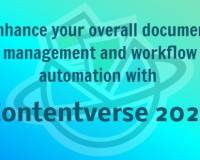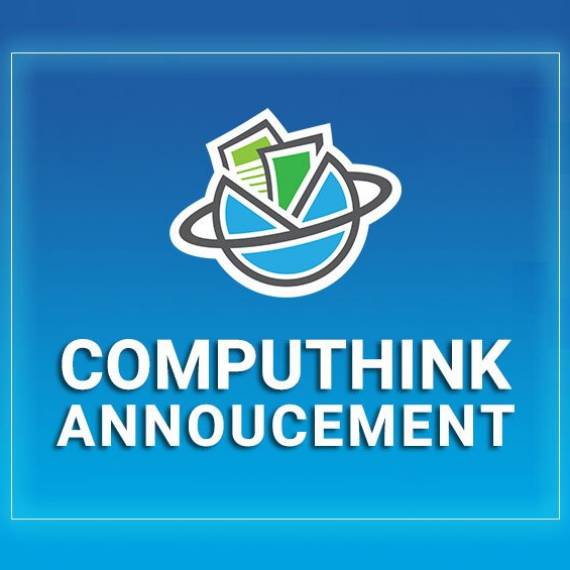We all know the old joke about New Year’s Resolutions. You boast about your moratorium until midnight, but come 1am, you’ve already broken 2020’s new rule. Or you are so excited for this new goal only to forget it by Valentine’s Day. Most years, a resolution is a personal undertaking that hardly affects your friends and family, and for many people, it is nothing more than a fun tradition for the holiday. But what about your professional goals? How good are you at keeping your work-related New Year’s Resolutions? Do you have any? Combine your professional plans with the annual tradition to found a more focused you in 2020 managing a more focused office. Having trouble committing? We can help with that.


Starting On Projects You’ve Put Off
Obviously, a new year is ripe for kicking off new initiatives. Most vacations are ending or becoming less common. Holidays are over. Business as usual. Unfortunately, in many places, it is still wicked cold, and we haven’t quite shaken the sluggishness of the holidays. Everything you’ve been trying to get started since last January is on the table again, more daunting than exciting. “Oh well,” you think, “there’s always next January.” Take a step back. Look again at all these little projects on the table. What do you need to get cracking?
For starters, make a plan. For each project, outline what you’re looking to do. Objectives first, and even the reasoning behind objectives. For an IT director, this could mean implementing updates to software on all company computers, or it could mean implementing a new ECM. For an admin, you might want to begin hiring a temp or intern. Why are you doing this? To take on tax season’s extra workload? Stating the firm, clear objective and the compelling reason behind it, you have established a mini mission statement which can be revisited for inspiration and course correcting throughout the planning and the project itself.
After this, what are the big, blocky, basic few steps that this project comprises? For computer updates, this list could be as simple as the following: 1) Identify major consistent issues with company machines; 2) Identify corrective materials and/or measures; 3) Assign personal to implement; 4) Follow up on implementation. That’s it. Once you have the broad strokes, you can go through each step and write out the sub-steps, the details, who you plan to assign, which problems specifically are company computers suffering from? Having a plan will make tasks, both mighty and mini, appear less daunting. Once it is completed, send your plan to the employees involved, and to your supervisor if applicable. This ensures accountability from both yourself and the other parties likewise responsible for the project.
Finally Replace Those Dusty Old Assets
Perhaps you have been meaning to ask for money to update the office peripherals. Every desk has a sturdy cathode monitor constantly smelling of hot plastic, and every mouse ball is worn down so much that it’s lost its shape. Maybe you want to get everyone standing desks, replace the old accounting software with a competing solution, or increase the marketing budget to fit in more advertising for 2020. Asking your boss or CEO for anything can seem frightening, especially new assets. Still, this is the right time for it. You just have to prepare the situation ahead of time, both to ensure success and for your own peace of mind.
Get information on the concept behind the assets first. Whether replacing old tech or filling a brand new position, if you can’t convince yourself why it’s necessary, then you sure can’t convince your department head. Look up industry reports. Look up RoI for this type of asset. If possible, begin seeking out a cost-effective option to make the return potential as high as possible.
Do your due diligence. Research the heck out of this new solution or hardware. See what your rivals are utilizing if you can. Talk to a sales rep and ask them for any literature, demo videos, infographics, and competitor analyses that they can give you. Then, follow up on these competitors and ask their reps for the same treatment. You can even assemble your own brief competitor analysis document If it is hardware, try to visit it in person and ask to view it in action or try it yourself. The same goes for software, but this shouldn’t require as much running around for a trial. Seek out user reviews for any solutions, or check a professional review website like c|net, Capterra, or Software Advice.
Schedule a meeting. Even if it is a few weeks out, that gives you time to over-prepare. And it solidifies the commitment. If you have plenty of research and product information, you can walk into the room confident in your decision and the company’s need. But don’t oversell it! Some CEOs or directors will do a 180 when you overwhelm them with too much minutiae, or they will slow down the process. Focus on the core problem, identify KPIs, and then present the bottom line. How will it benefit the company? You don’t need to get in the weeds with them, but it doesn’t hurt to be prepared in case they need more convincing.


Who Says Spring Cleaning Can’t Start in January?
Gaining a new asset and kicking off side projects may feel daunting in their own right, but cleaning the whole office is the bigger fish here. This could be a physical tidying of nooks and crannies, selling off old computer monitors and tossing broken furniture. It could also be a digital overhaul and restructuring of the filing system. Even when clearing out the physical files, you should consider digitizing. Not only will this allow you to free up more space, but starting so early in the year has many advantages as well. You can avail services normally busier and more expensive in the spring and Q4, such as document shredding, equipment repair, and of course file scanning.
If you are breaking down your filing structure, organizing previously unorganized documents, consolidating files from multiple machines, or digitizing those physical files, an Enterprise Content Management Solution is the obvious tool for the job. You don’t want to have to do all of this cleaning and organizing every winter – your New Year’s Resolution stick-to-it-iveness just won’t win out year after year. The wonderful thing about an ECM solution is how you can practically set it and forget it. The work is frontloaded; a security administrator sets access levels, administrators teach employees how to leverage the system, and document types/workflows are established at the start. After that, it is smooth sailing as you enter documents into the system via multiple access points, share documents internally with ease, securely share documents externally, and instantly find documents with multiple search options.
Business Processes: An Oil Bath for an Old Machine
The reason the factories still in operation today are still in operation today is simple: modernization. They don’t rely on old methods to do the same thing. Instead of long tables where items get passed from hand-to-hand, we changed to conveyor belts. Instead of all of it being done by hand, we use a combination of machines and human oversight. Miniaturization allows us to fit more lines, more machines, and more product in the same location. The same thing is true of computers – we shrunk them down and sped them up to the point where high-powered business can be done on an average cell phone sometimes without ever touching a desktop or laptop.
Software can also augment everyday business endeavors and special deals, like large sales, new asset purchase orders, or government contract bids. ECM solutions like Contentverse give users the ability to create workflows that mimic and accelerate real-world steps as documents get passed between relevant parties, approved, and escalated. Choosing an ECM and implementing its business process management capabilities also ensures that you are prepared for any future work coming in. And any future New Year’s Resolutions you promise to yourself at an optimistic company Christmas party. Once your baseline streamlining of business processes reaches an epic level, and your file storage needs are completely taken care of, you’ll be opening the door to all kinds of achievable resolutions for decades down the line.


Planning for 2021 and Beyond
The aim of the exercise is to better yourself and those around you, improve your performance, enhance your company’s output – positive goals for all of us. A resolution should be seen as a good thing that you’ve been wanting or needing to achieve for a long time anyway. Too often, when we let ourselves sit on our hands and make excuses, resolve turns into regret, relapse, and resentment. That’s bad for you and bad for business. Rather than forego a healthy tradition altogether, these small steps can help ensure you still meet your goals 2020 effectively. Trust us, you’ll thank yourself later. And so will your colleagues.











Leave a Comment